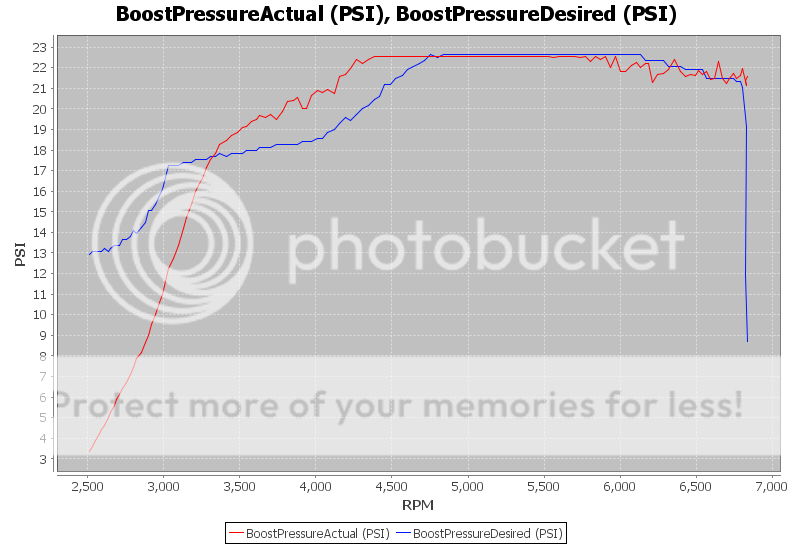Regarding wastegate actuator, spring rate, force:
Cut up a bad K03 actuator to get some idea of the spring and dimensions:
Canister (actuator) OD: 59mm
Spring diameter: 37mm
Wire diameter: 2.5mm
Windings: 3 (plus top and bottom)
Spring uncompressed: 66 mm
Spring compressed with 11 lbs load: 46mm
Spring rate: 11 lbs / 20 mm = 0.55 lbs/mm = 14 lbs/inch = 0.25 kg/mm = 2.5 N/mm
Dimensions: see photos
https://www.dropbox.com/sh/2ifx7vdb9qr95gu/vc4IhBLaXY
Also, used a K03 (from 2.7T) for the following 'spring rate' calc:
Travel: ca. 15mm
Start pressure: 7 psi
End pressure: 14 psi
Based on above: around 2mm per psi.
With the 'active' diameter the air/vacuum is working on of about 2" or around 3 square inches
14 psi = 42 lbs
7 psi = 21 lbs
spring travel: for 21 lbs = 14mm. Spring rate based on that: 1.5 lbs/mm or 0.675 kg/mm or 6.75 N/mm or 38 lb/in.
Obviously, a big discrepancy to the above spring rate of 14 lb/inch (not sure what the US unit for spring rate is).
Flapper active diameter: ca. 25mm or 1 inch. Area: 0.75 square inch
Backpressure in exhaust manifold to equal spring pressure: Example with 5 psi crack pressure of wastegate:
5 psi x 3 square inches = 15 lbs preload on the actuator spring.
15 lbs / 0.75 square inches = 20 psi back pressure required to lift the flapper.
Cut up a bad K03 actuator to get some idea of the spring and dimensions:
Canister (actuator) OD: 59mm
Spring diameter: 37mm
Wire diameter: 2.5mm
Windings: 3 (plus top and bottom)
Spring uncompressed: 66 mm
Spring compressed with 11 lbs load: 46mm
Spring rate: 11 lbs / 20 mm = 0.55 lbs/mm = 14 lbs/inch = 0.25 kg/mm = 2.5 N/mm
Dimensions: see photos
https://www.dropbox.com/sh/2ifx7vdb9qr95gu/vc4IhBLaXY
Also, used a K03 (from 2.7T) for the following 'spring rate' calc:
Travel: ca. 15mm
Start pressure: 7 psi
End pressure: 14 psi
Based on above: around 2mm per psi.
With the 'active' diameter the air/vacuum is working on of about 2" or around 3 square inches
14 psi = 42 lbs
7 psi = 21 lbs
spring travel: for 21 lbs = 14mm. Spring rate based on that: 1.5 lbs/mm or 0.675 kg/mm or 6.75 N/mm or 38 lb/in.
Obviously, a big discrepancy to the above spring rate of 14 lb/inch (not sure what the US unit for spring rate is).
Flapper active diameter: ca. 25mm or 1 inch. Area: 0.75 square inch
Backpressure in exhaust manifold to equal spring pressure: Example with 5 psi crack pressure of wastegate:
5 psi x 3 square inches = 15 lbs preload on the actuator spring.
15 lbs / 0.75 square inches = 20 psi back pressure required to lift the flapper.








